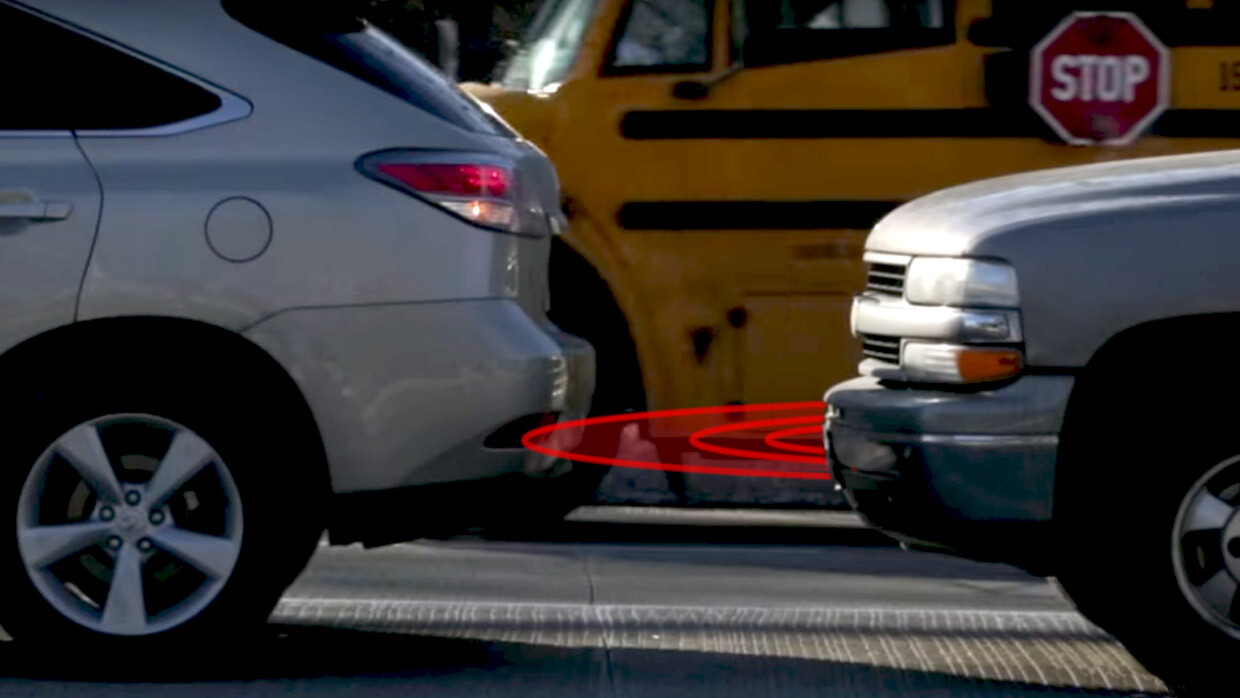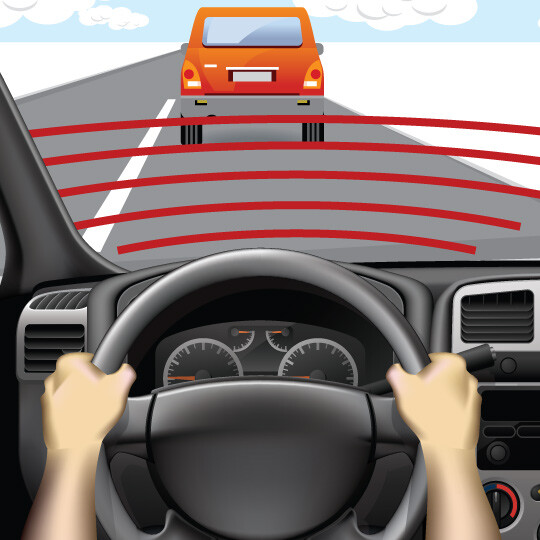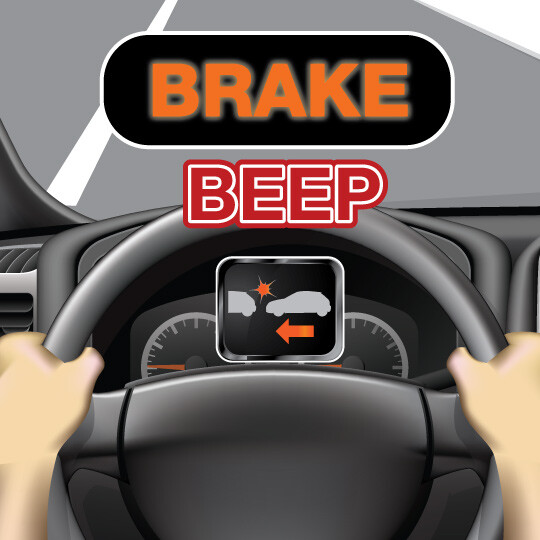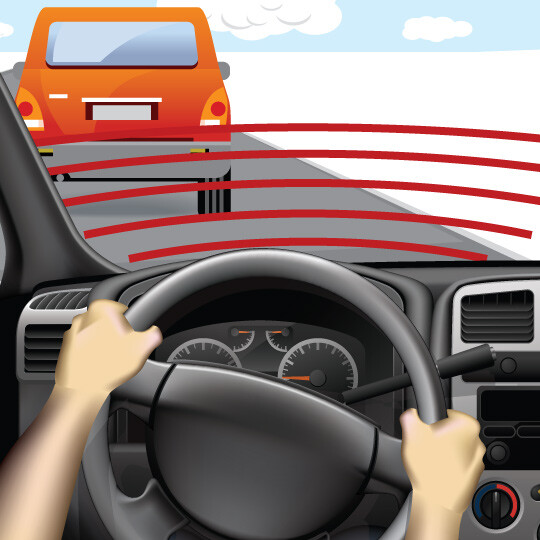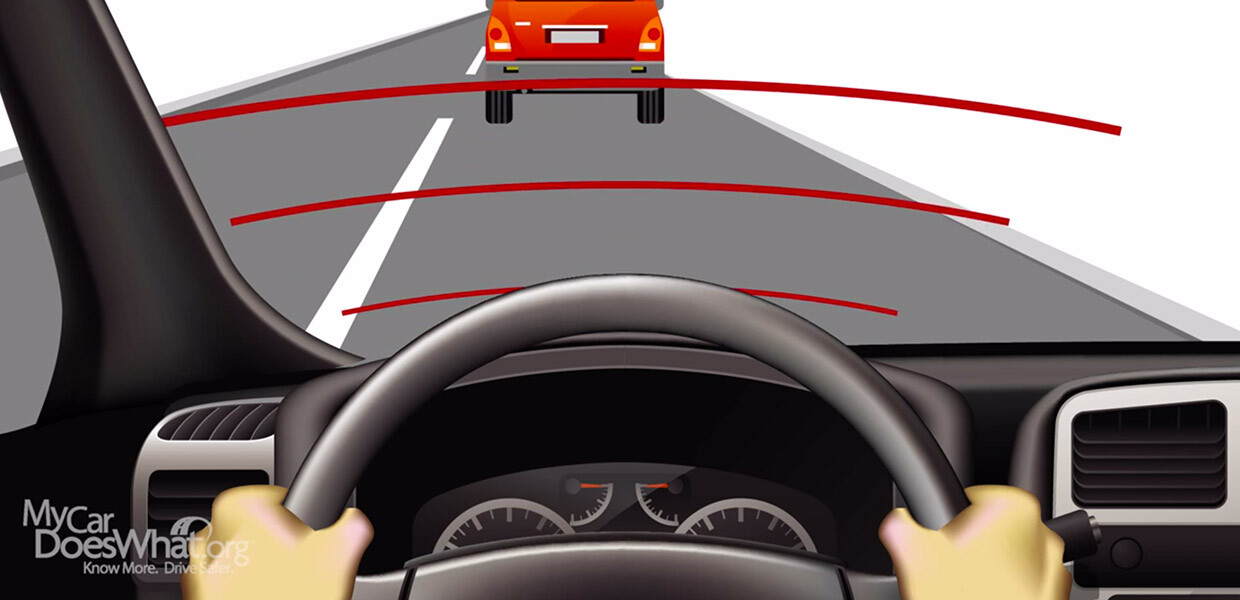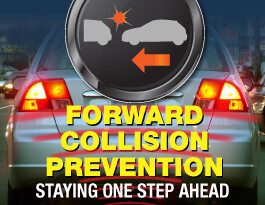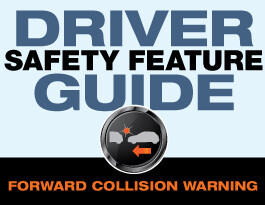Forward Collision Warning
Forward collision warning can alert you of an impending collision with a slower moving or stationary car in front of you.
What It Does: Designed to alert you to a hazard ahead so that you can brake or swerve in time.
What It Does Not Do: Forward collision warning alone will not automatically brake for you.

